Byeolchaeban Gyodong Ssambap (별채반 교동쌈밥)
4.5 Km 3 2023-07-12
경상북도 경주시 첨성로 77
Located in Hwangnam-dong, Gyeongju, Byeolchaeban Gyodong Ssambap is a famous joint that has made multiple appearances on TV programs. The signature menu of this restaurant is the leaf wraps and rice, or “ssambap”, where vegetables and leaves are used to create wraps with meat, fish, and other side dishes. The restaurant offers a variety of main dishes for wrapping, such as Pork Bulgogi and Duck Bulgogi. Other dishes include the Yukbuchon Spicy Beef Soup and Gondalbi Bibimbap. This restaurant is also quite appealing for vegan diners, since leaf wraps and rice involve plenty of vegetables. Group seats and reservations are available. Cheomseongdae Observatory and Daereungwon Ancient Tombs are located nearby, making it quite easy to plan the itinerary.
Bomun Golf Club (보문골프클럽)
4.6 Km 12858 2021-04-16
182-14, Bomun-ro, Gyeongju-si, Gyeongsangbuk-do
+82-54-745-1680
Bomun Golf Club is located in the historic cultural city of Gyeongju. Situated within Bomun Tourist Complex, visitors can enjoy golf and many attractions.
Gyeongju Teddy Bear Museum (테디베어뮤지엄 경주)
4.6 Km 19354 2021-01-06
280-34, Bomun-ro, Gyeongju-si, Gyeongsangbuk-do
+82-54-742-7400
Located within Dream Center, the Teddy Bear Museum in Gyeongju, Gyeongsangbuk-do is a unique modern attraction, opened April 6, 2011. Instead of displaying realistic sculptures, the museum uses hundreds of large and small teddy bears to depict the history of mankind, going back as far as the Age of Dinosaurs, as well as the Silla Kingdom in several different exhibition halls. The museum also features a 3D movie theater, art gallery, underwater world exhibit, and souvenir shop.
Yosokkoong (요석궁)
4.7 Km 53074 2020-07-14
19-4, Gyochonan-gil, Gyeongju-si, Gyeongsangbuk-do
+82-54-772-3347
Named after Silla King Muyeol's daughter, Princess Yoseok, Yosokkoong serves traditional Korean food. The resturant is run by the Choi family, who settled on the site of Princess Yoseok's house during the Joseon dynasty, and has passed on the restaurant and family recipes through 12 generations. All the foods served are made with organic ingredients, for a healthy taste that cannot be found anywhere else.
Gyeongju National Museum (국립경주박물관)
4.8 Km 73605 2023-07-12
186, Iljeong-ro, Gyeongju-si, Gyeongsangbuk-do
+82-54-740-7500
Gyeongju National Museum houses numerous historical and cultural artifacts of the Silla dynasty (57 BC-AD 935). The museum provides various programs including at the Children’s Museum School. The newly renovated Silla Art Gallery and Silla History Gallery lobby by Teoyang Studio are popular among visitors. This multi-complex center provides the history of Silla with various artifacts.
The Divine Bell of King Seongdeok (성덕대왕신종)
4.8 Km 25673 2020-04-04
186, Iljeong-ro, Gyeongju-si, Gyeongsangbuk-do
+82-54-740-7500
The Divine Bell of King Seongdeok, the largest Korean bell preserved, stands 3.75-meter tall, has a lip diameter of 2.27 meters, and is 11 to 25 entimeters wide. In 1997, Gyeongju National Museum weighed it at 18.9 tons. The bell was cast to pay tribute to the memory of King Seongdeok. It was completed in 771 and named ‘The Divine Bell of King Seongdeok.’ However, because the bell was installed at Bongdeoksa Temple, it has also been called the Bell of Bongdeoksa.
The bell is also known as the Emile Bell, a name derived from an ancient legend in which a child was sacrificed in order to give sound to the bell, whose echoes of ‘em-ee-leh’ resemble the traditional Korean word for "mommy."
The tubular sound pipe at the top of the bell that helps the sound reverberate is a unique feature that can be found only in Korean bells. The yongnyu, which serves as a loop to hang the bell, has been decorated to resemble a dragon’s head. A band of arabesque patterns can be found at the shoulder, and the striking point of the bell is in the shape of a lotus flower.
The magnificent design and inscription methods used in this bell exemplify the artisan's craftmanship of the Unified Silla period. The bell is also inscribed with over one thousand Chinese characters, and its beauty and integrity have been meticulously preserved despite the passage of over 1,300 years.
Silla Cultural Festival (신라문화제)
4.8 Km 7295 2023-09-14
Gyo-dong, Gyeongju-si, Gyeongsangbuk-do
+82-54-777-5953~4
Silla Cultural Festival is held to promote the excellence of Silla history and culture and to give pride to Gyeongju residents. The festival features a combination of traditional and modern aspects.
Gyeongju Gyochon Traditional Village (경주 교촌마을)
4.9 Km 48056 2020-11-20
39-2, Gyochon-gil, Gyeongju-si, Gyeongsangbuk-do
+82-54-760-7880
At Gyeongju Gyochon Village, visitors can see the House of the Gyeongju Choi Clan (Important Folklore Material No. 27) and try some Gyeongju Gyodong Beopju Liquor (Important Intangible Cultural Asset No. 86-3). The village centers around the Gyeongju Choi Clan, a family known to have maintained their wealth for over 12 generations, producing many important people. Visitors can learn about the lifestyle and spending habits that enabled the family to do this. The village is also home to the site of Yoseokgung, the house of Silla Princess Yoseok. Nearby attractions include Gyerim Forest, Naemulwangneung Royal Tomb, and Gyeongjuhyanggyo Local Confucian School.
Silla Sori Festival - Emille (신라소리축제 에밀레전)
4.9 Km 5047 2021-01-08
274, Gyo-dong, Gyeongju-si, Gyeongsangbuk-do
• 1330 Travel Hotline: +82-2-1330 (Korean, English, Japanese, Chinese) • For more info: +82-53-427-5114
Silla Sori Festival mainly focuses on the King Seongdeok Divine Bell (Emille Bell), established during the Unified Silla period, and takes place in Gyeongju, embracing its thousand-year-old heritage. The festival has been held to acknowledge the value and legacy of this traditional Korean bell dating back to the Silla period.
Woljeonggyo Bridge (월정교)
4.9 Km 2725 2023-01-03
31, Gyochonan-gil, Gyeongju-si, Gyeongsangbuk-do
+82-54-779-6100
Woljeonggyo Bridge located in Gyo-dong, Gyeongju was built during the Unified Silla period (AD 676-935), but was burnt down during the Joseon dynasty. Through historical research, the bridge was rebuilt in April 2018 to become the largest wooden bridge in Korea. According to Samguk Sagi (History of the Three Kingdoms), the bridge was built during the 19th year of King Gyeongdeok’s reign (AD 760), connecting Wolseong and Namsan together. The historical research to rebuild the bridge lasted from November 26, 1984 to September 8, 1986, finding that the bridge was made with wood for the first time. The first rebuilding of the bridge was from 2008 to 2013 and the finishing touches were added from April 2016 to April 2018. Through this research and rebuilding process, future restoration of historical buildings have a better reference to use.
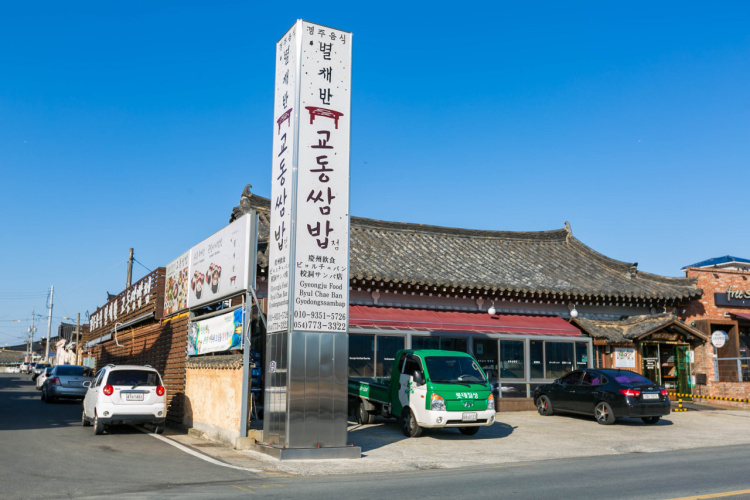

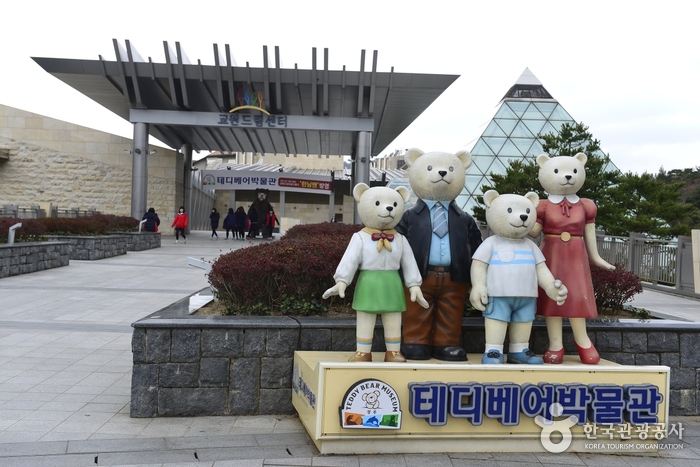
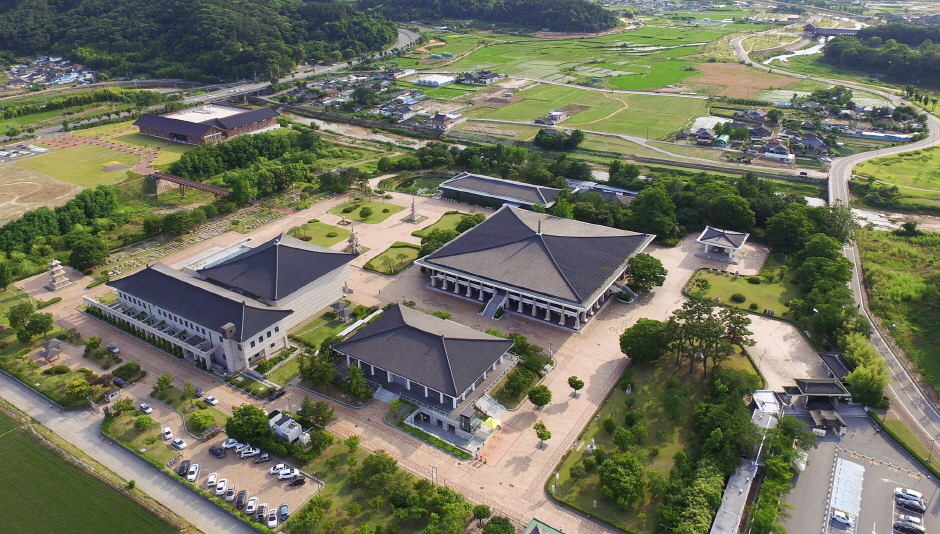

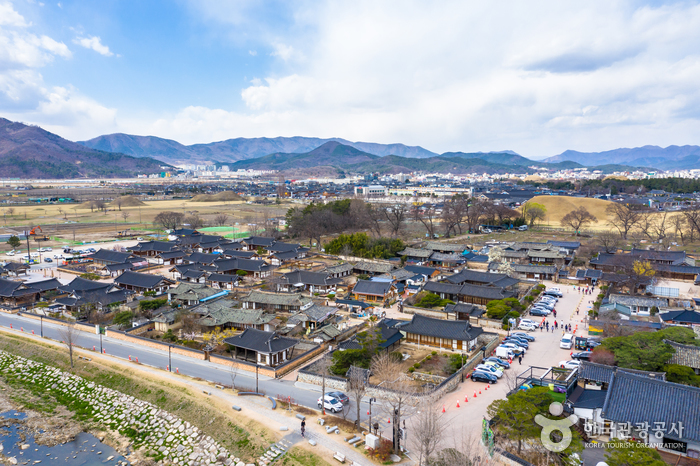
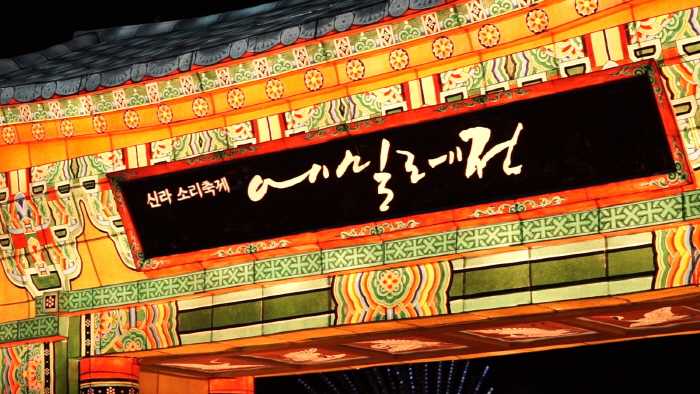
 English
English
 한국어
한국어 日本語
日本語 中文(简体)
中文(简体) Deutsch
Deutsch Français
Français Español
Español Русский
Русский